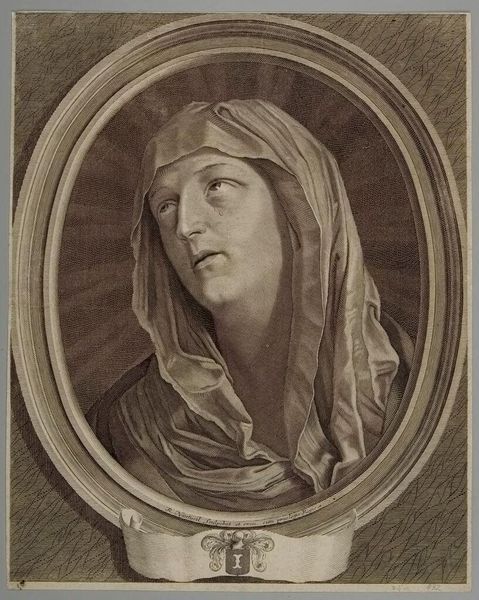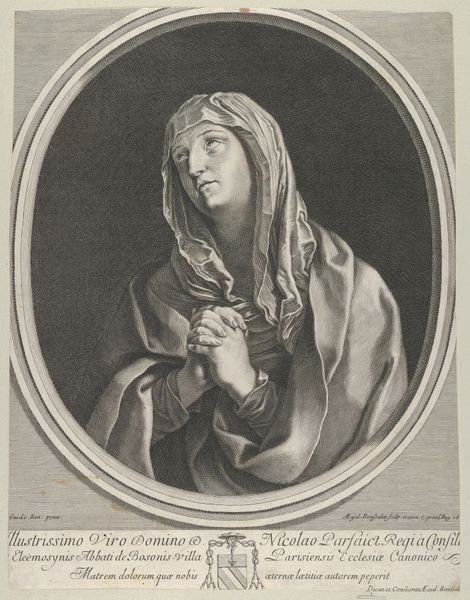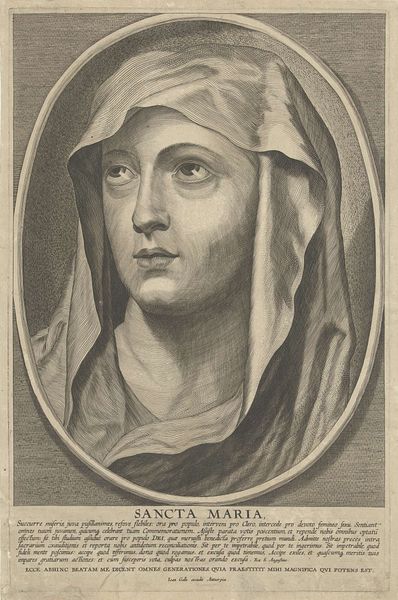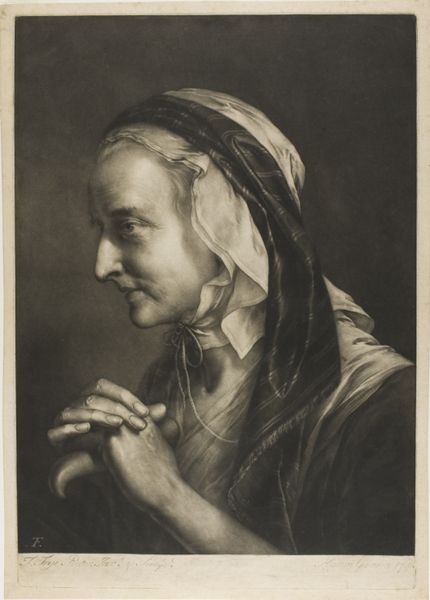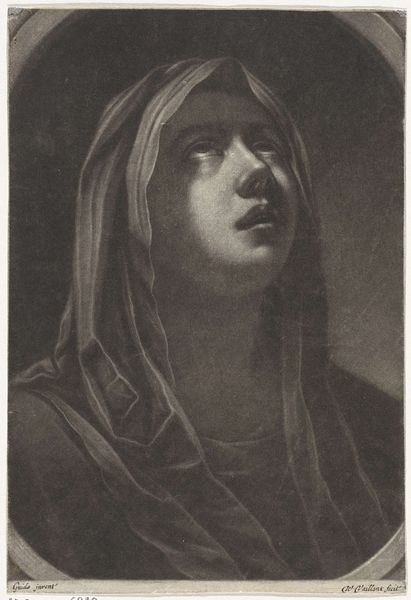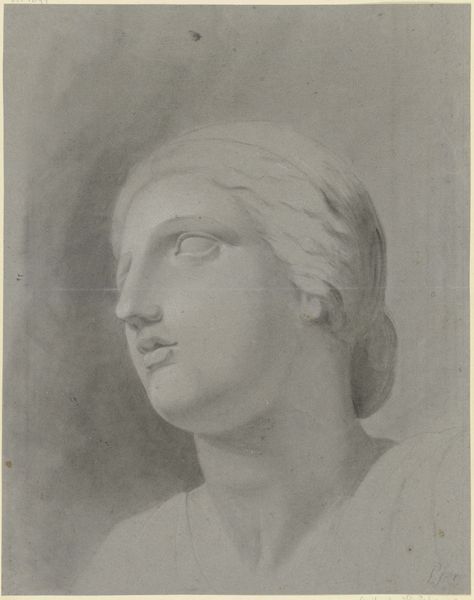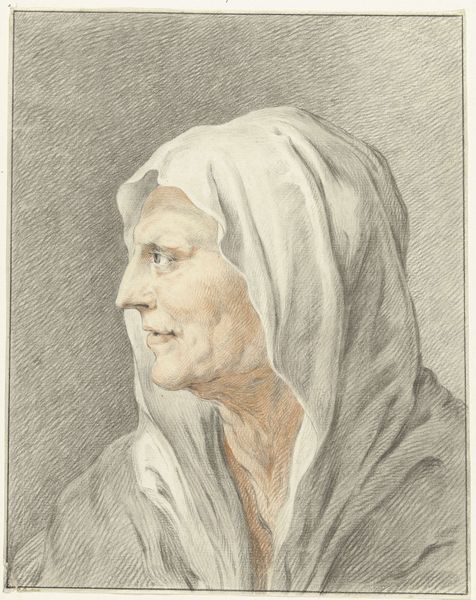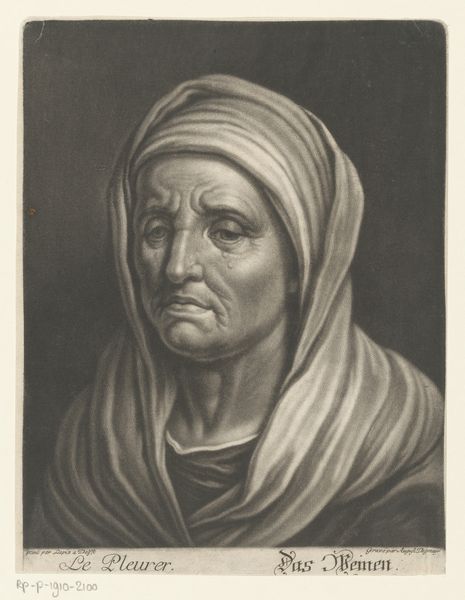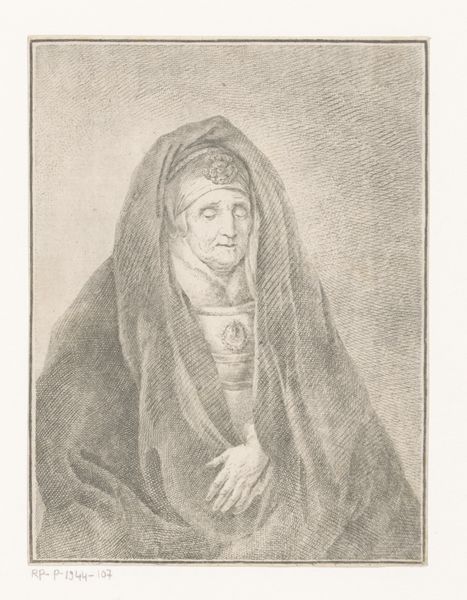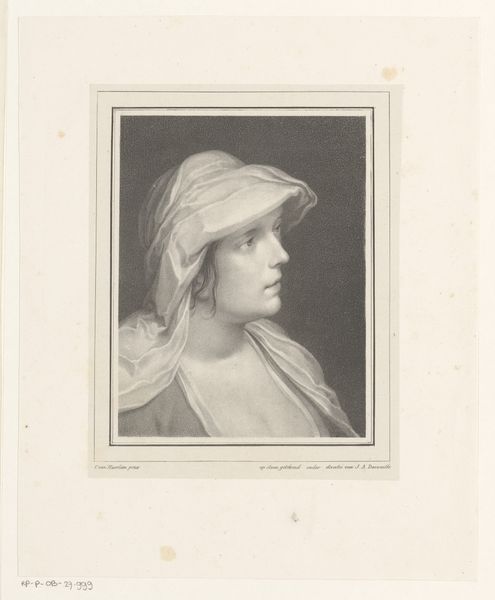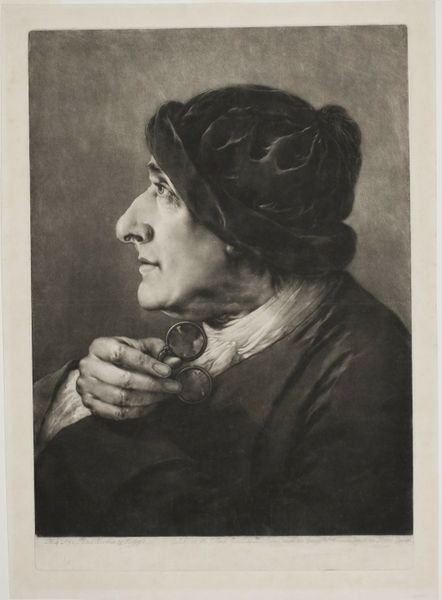
print, engraving
#
portrait
#
baroque
# print
#
engraving
Copyright: National Gallery of Art: CC0 1.0
Curator: Our next work is Robert Nanteuil’s “Mater Dolorosa,” an engraving from 1654. Editor: What a striking image! There's a sorrow here that's immediately evident in the angle of her face, the way her eyes lift toward the light. It is powerful even with such delicate lines. Curator: Nanteuil was a master of engraving, and his prints circulated widely, allowing for the dissemination of images and ideas. Consider the labor involved: each line, each gradation meticulously etched to produce an image with such emotional resonance. Who did this image reach? And how did their position and economic bracket color their perception of the Virgin? Editor: The composition itself guides our gaze. The oval frame, echoed by the soft lines of her veil, draws our attention to her face, the focal point. I think this emphasis invites us to contemplate her inner world. Her pose seems studied, with her downcast eyes, but nonetheless compelling. Curator: Engravings like this also offered a more accessible alternative to paintings for a rising middle class, reflecting changing patterns of religious devotion and collecting habits. Were people encouraged to self-reflect and contemplate their devotion, perhaps measuring their own experience against an ideal of maternal grief and spiritual fortitude? The distribution methods are certainly relevant here. Editor: Absolutely. And in terms of technique, the rendering of light and shadow, particularly on her veil, is exceptional. The contrast heightens the drama and contributes to the overall somber mood, but she looks angelic nonetheless. It draws you into the narrative of sorrow. Curator: Indeed, it suggests that artistic skill could render familiar figures of the Church into commodities. The Church was evolving, in practice if not theory, into a series of consumable image bites for personal meditation. Editor: A fascinating duality. The personal sorrow of the image balanced against its accessibility, that speaks volumes about our experience when we gaze at it hundreds of years later. Curator: I agree. Thinking about this image, especially in this medium, does change my view on what sorrow means in popular and fine art today.
Comments
No comments
Be the first to comment and join the conversation on the ultimate creative platform.
